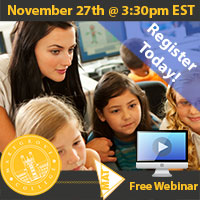 A few months ago when I was “cleaning” (or at least going through the motions of it), I took a break to look through a few random literary collections. One was Mary Shelly’s Frankenstein, a book I hadn’t read since my sophomore year of high school. As I flipped through the novel nearly fifteen years later, I chuckled at the randomness of the faded neon highlighter. On some pages, nearly every sentence was highlighted—then there was nothing for another fifty pages. I remember reading and enjoying the book, but years later, it was clear that I certainly wasn’t versed in critical reading as a sophomore lad.
A few months ago when I was “cleaning” (or at least going through the motions of it), I took a break to look through a few random literary collections. One was Mary Shelly’s Frankenstein, a book I hadn’t read since my sophomore year of high school. As I flipped through the novel nearly fifteen years later, I chuckled at the randomness of the faded neon highlighter. On some pages, nearly every sentence was highlighted—then there was nothing for another fifty pages. I remember reading and enjoying the book, but years later, it was clear that I certainly wasn’t versed in critical reading as a sophomore lad.
Like critical thinking, critical reading is something many teachers take for granted because we know how to do it. But we need to remember that critical reading is a learned reading strategy, one that we must teach our students. Here are 5 ways to help you do just that:
4 reading strategies to help your students read with purpose
1. Reflect on your own reading strategies
Unless we can get into our students’ heads and squeeze into their shoes, we’re going to struggle to appreciate what they go through. Here’s a simple exercise that will help you not only see reading from a student’s perspective, but it will also help you observe your own reading strategies.
- Find a book that is unfamiliar, slightly out of your comfort zone and not particularly interesting to you
- Flip to a random section and start reading
- As you read, take note of what’s happening to you: Is your mind wandering? Do you have to reread sections to comprehend them? What sections are you underlining or circling?
- How would you find your footing? Would you flip to the previous chapter? Would you read the introduction and conclusion paragraphs first? Would you take a look at the table of contents or read the author’s biography?
More than likely, you’re feeling a little lost, aren’t you? The same thing happens to our students when we send them off on a mission to tackle seemingly random passages or chapters without giving them a clear sense of purpose or clues as to how they’re going to be using the text once they’ve read it.
2. Give students a clear sense of purpose
Many of us worry that telling our students what to look for means that we’re doing all of the legwork for them. But reflect on your own reading strategies. If you were reading a novel for pleasure, you’d use a very different reading strategy than you would if you were reading the same novel for critical analysis, a presentation or a response paper.
When you read for pleasure, you’re probably reading somewhat “superficially,” right? In other words, you’re probably not laboring over paragraphs. More than likely, you’re simply enjoying the plot and taking in the scenery. But when you are given a specific task, when you know why you are reading something, you’re going to dig into the text in a much deeper way.
When you think of it this way, giving your students hints as to what they should be looking for isn’t “cheating” or “babying” them at all.
3. Allow your students to invent their own purpose
If you’d like your students to find their own way, at least equip them with a few reading strategies that will help them find a sense of purpose. Here are two such strategies:
- The Selfish Reader: It’s important, not to mention fun, to be a “selfish reader”—that is, a reader who says, “So what? Why should I care about this? How does it impact me? How does it impact my world?” Asking these questions will not only force your students to interrogate the author, it will also force them to keep their own presuppositions and biases in check.
- The Connecting Reader: There are certainly exceptions, but ideally, texts shouldn’t be read in isolation. Whatever students read should transcend the classroom, spill over into their other classes and into their own personal lives. Students learn to make connections between seemingly unrelated books and classroom activities not on their own, but when it is modeled for them.
4. Show them how to look for key words and signal phrases
Most writers use certain signal or transitional phrases that, if you know how to look for them, draw attention to essential information. Experienced and critical readers know, for example, that when an author says, “thus” or “therefore,” they should pay close attention. The same goes for “however,” “moreover,” etc. Words like “First,” suggest to us that it is likely that there will be a “Second” and “Third” point the author is going to make—which, again, means that we know to pay close attention. Instead of having our student learn the hard way, why not simply show them the tricks we’ve picked up over the years?
If you’re looking for more reading strategies, check out one of our recent articles, 5 Ways to Help Your Students with Critical Reading and Reading Crit.... We would also like to give credit to Cris Tovani’s article, The Power of Purposeful Reading, for many of the strategies we’ve included here.
© 2024 Created by Steve Hargadon.
Powered by
![]()
